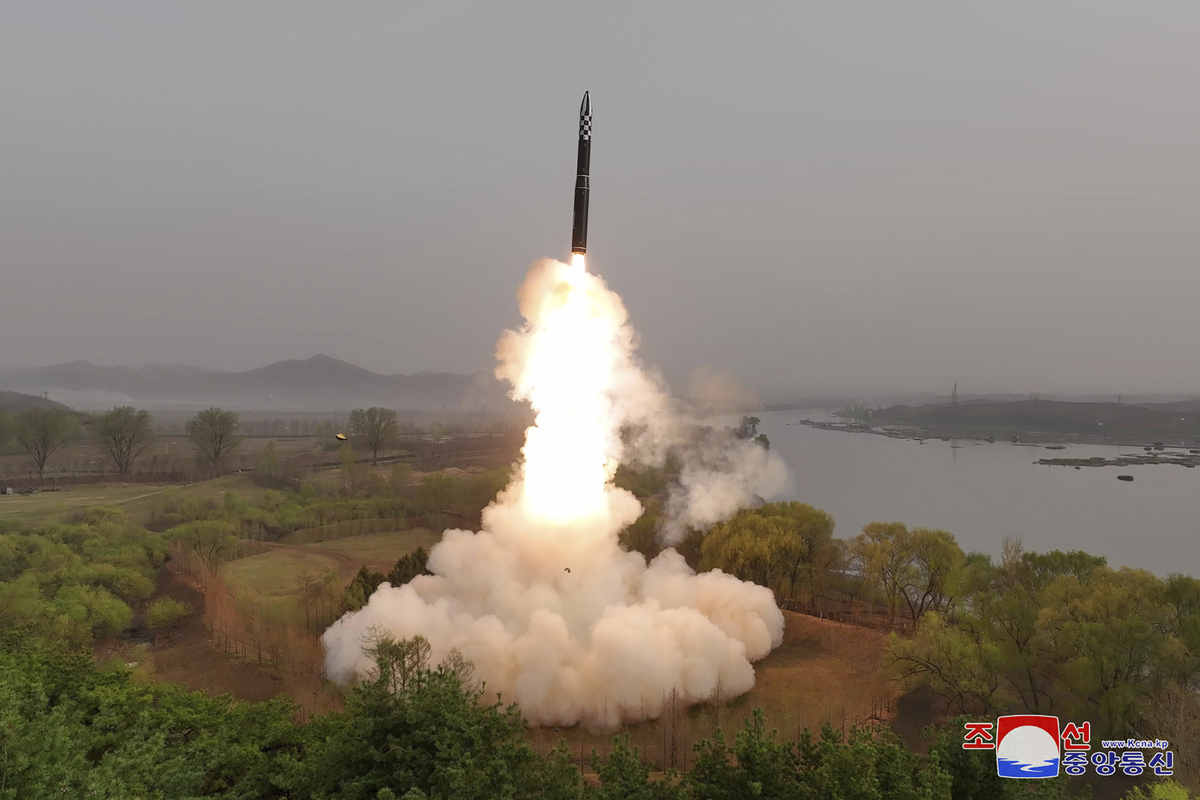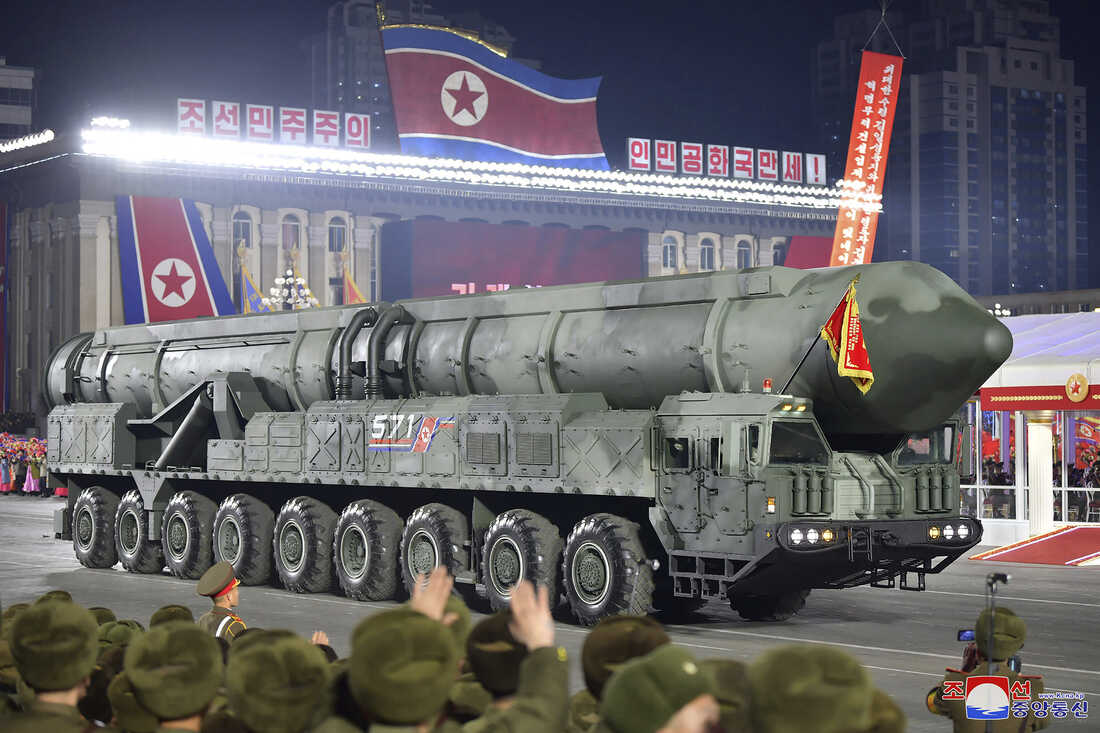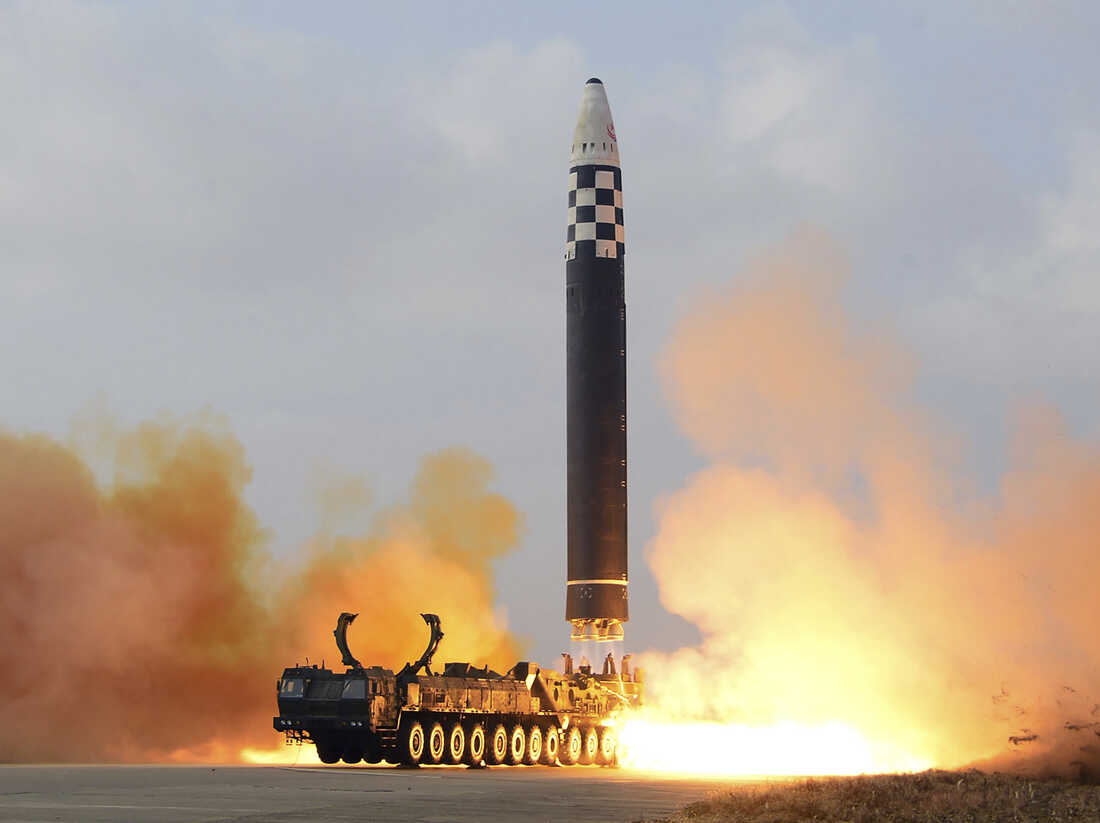North Korea test-fires powerful new missile: NPR


This photo provided by the North Korean government on April 14, 2023, shows what it says is the test launch of a Hwasong-18 intercontinental ballistic missile on Thursday, April 13, 2023 at an undisclosed location, North Korea.
AP
hide captions
switch captions
AP

This photo provided by the North Korean government on April 14, 2023, shows what it says is the test launch of a Hwasong-18 intercontinental ballistic missile on Thursday, April 13, 2023 at an undisclosed location, North Korea.
AP
North Korea says it has successfully tested a new type of intercontinental ballistic missile (ICBM) that can be launched much faster than those in its current arsenal.
Experts say the missile using solid fuel instead of liquid is a major milestone for the nation’s military and will significantly bolster the country’s already formidable nuclear arsenal.
“It would be much harder for the US to find and destroy these missiles in a conflict,” said Jeffrey Lewis, an expert on North Korea’s nuclear program at the Middlebury Institute of International Studies in Monterey. “That gives North Korea a much better deterrent.”
The test took place on Thursday morning, local time. The rocket appears to have flown at a high angle to Earth, According to the Ministry of Defense of Japan. Its flight path caused it to quickly trigger an alert over the Japanese island of Hokkaido. North Korea typically tests its long-range missiles on so-called “loft orbits” that go almost straight up instead of traveling a long distance around the Earth.
NEWS: The first images of North Korea’s new Hwasong-18 solid-fuel ICBM were released Friday by state media. It was test-launched on Thursday in the presence of Kim Jong Un and his daughter
Than @nknewsorg early pic.twitter.com/moyfZdOYg0
– NK NEWS (@nknewsorg) April 13, 2023
Photos released by North Korean state media show the missile as a previously unknown type of solid-fuel rocket, described as the Hwasong-18. The photos show the rocket being launched while North Korean leader Kim Jong Un and his young daughter watch. Experts have located the missile launch site in a field near the North Korean capital, Pyongyang.

This photo, provided by the North Korean government, shows what it says is an intercontinental ballistic missile during a military parade on February 8, 2023.
KCNA/AP
hide captions
switch captions
KCNA/AP

This photo, provided by the North Korean government, shows what it says is an intercontinental ballistic missile during a military parade on February 8, 2023.
KCNA/AP
Lewis said many North Korea watchers were looking forward to the test. “North Korea has shown that it has been building solid-fuel ICBMs for several years now,” he said.
However, it represents a huge leap in North Korea’s nuclear capabilities. Until now, North Korea has relied on large, liquid-fueled missiles to launch nuclear weapons at the United States. Those rockets need to be refueled before launch – a process that can take an hour or more to complete. In addition, each missile must be escorted by a convoy of fuel tankers, making them easy targets for any enemies trying to take them down.

Previous North Korean missiles used liquid fuel. Liquid rockets are easier to detect and take longer to fire.
KCNA/AP
hide captions
switch captions
KCNA/AP

Previous North Korean missiles used liquid fuel. Liquid rockets are easier to detect and take longer to fire.
KCNA/AP
Not so for solid fuel rockets. The propellant in these weapons is loaded in the factory and remains stable until it is lit. That means the rockets don’t need a tank escort and can be launched as soon as they’re set up – usually within a few dozen minutes, according to Lewis.
Developing a large-diameter solid-fuel rocket is a difficult task, says Lewis. “I think developing an efficient solid-fuel ICBM is a lot harder than developing a nuclear weapon to mount on it,” he said. However, the North has been making steady progress. Last month, the country successfully launched a submarine-launched missile that also uses solid fuel.
Lewis says it is difficult to say what the political impact of the new rocket will be. On the one hand, such a weapon threatens the US far more than a liquid-fueled missile, but that fact could make Kim Jong Un’s regime feel safer.
Even so, he said, the missile shows that US efforts to prevent North Korea from developing advanced nuclear technology have largely failed. “I think we’ve gone too far from the point where we have any leverage to get North Korea to stop developing nuclear systems,” he said. “There aren’t any real fundamental technical barriers preventing the emergence.”




